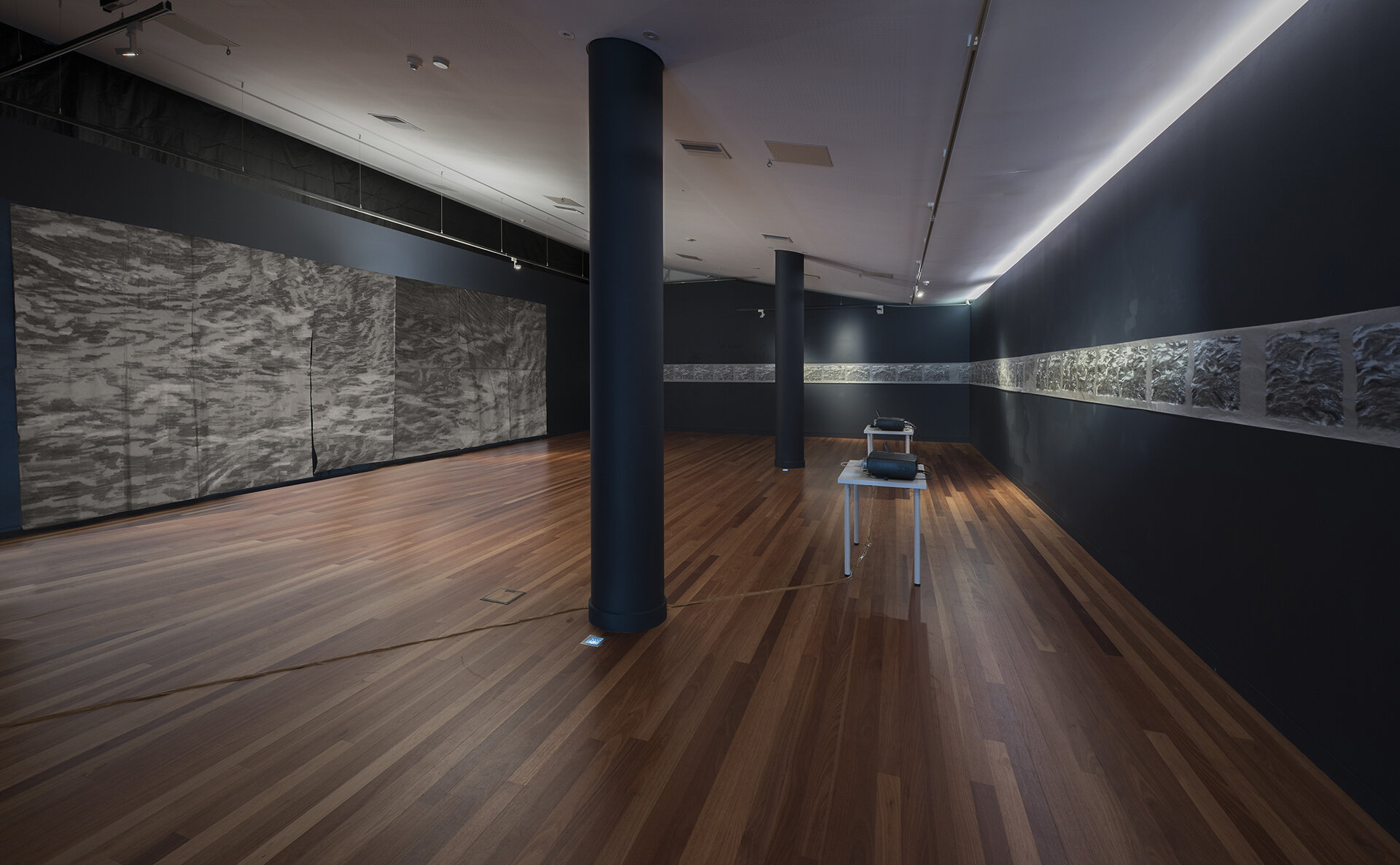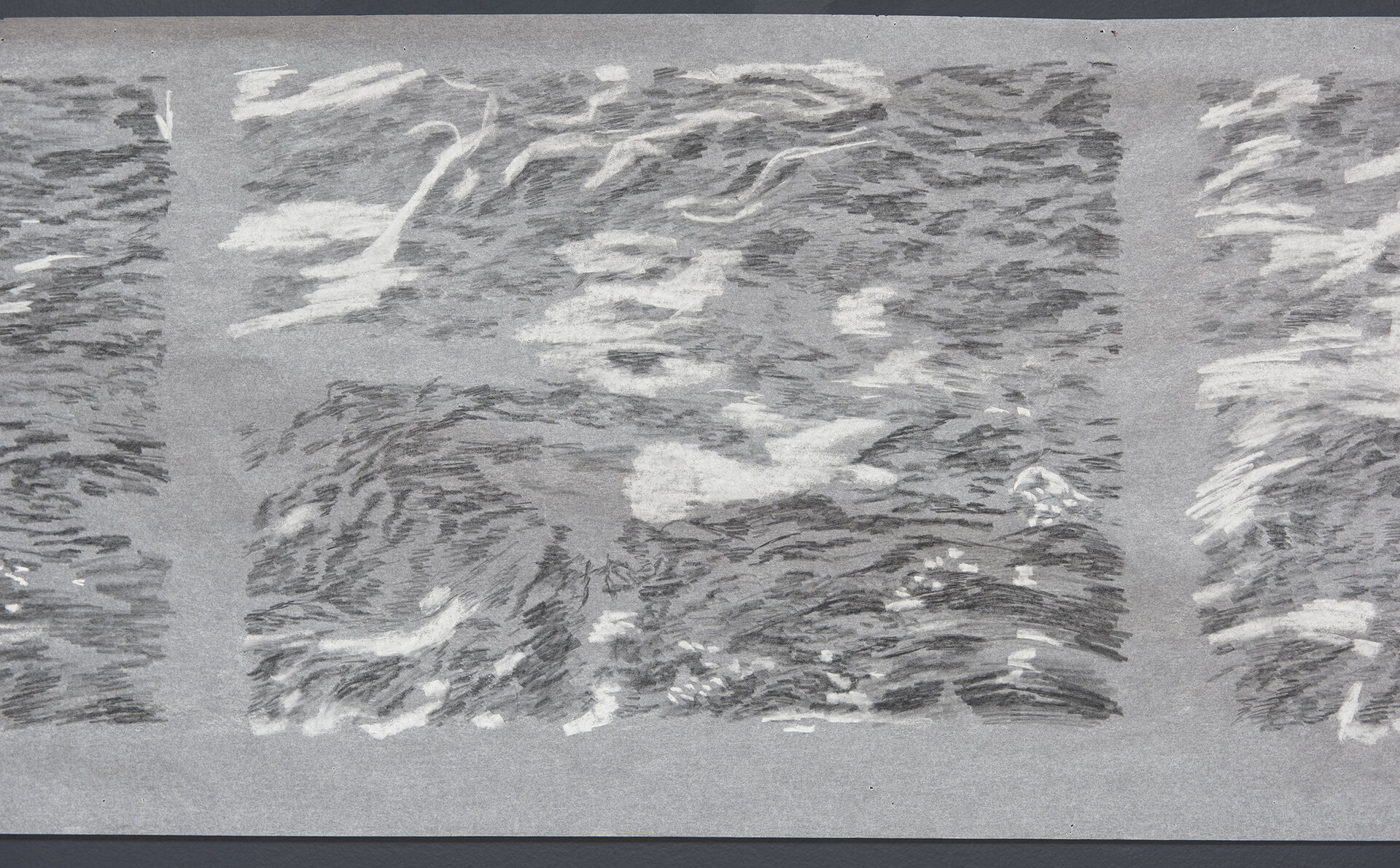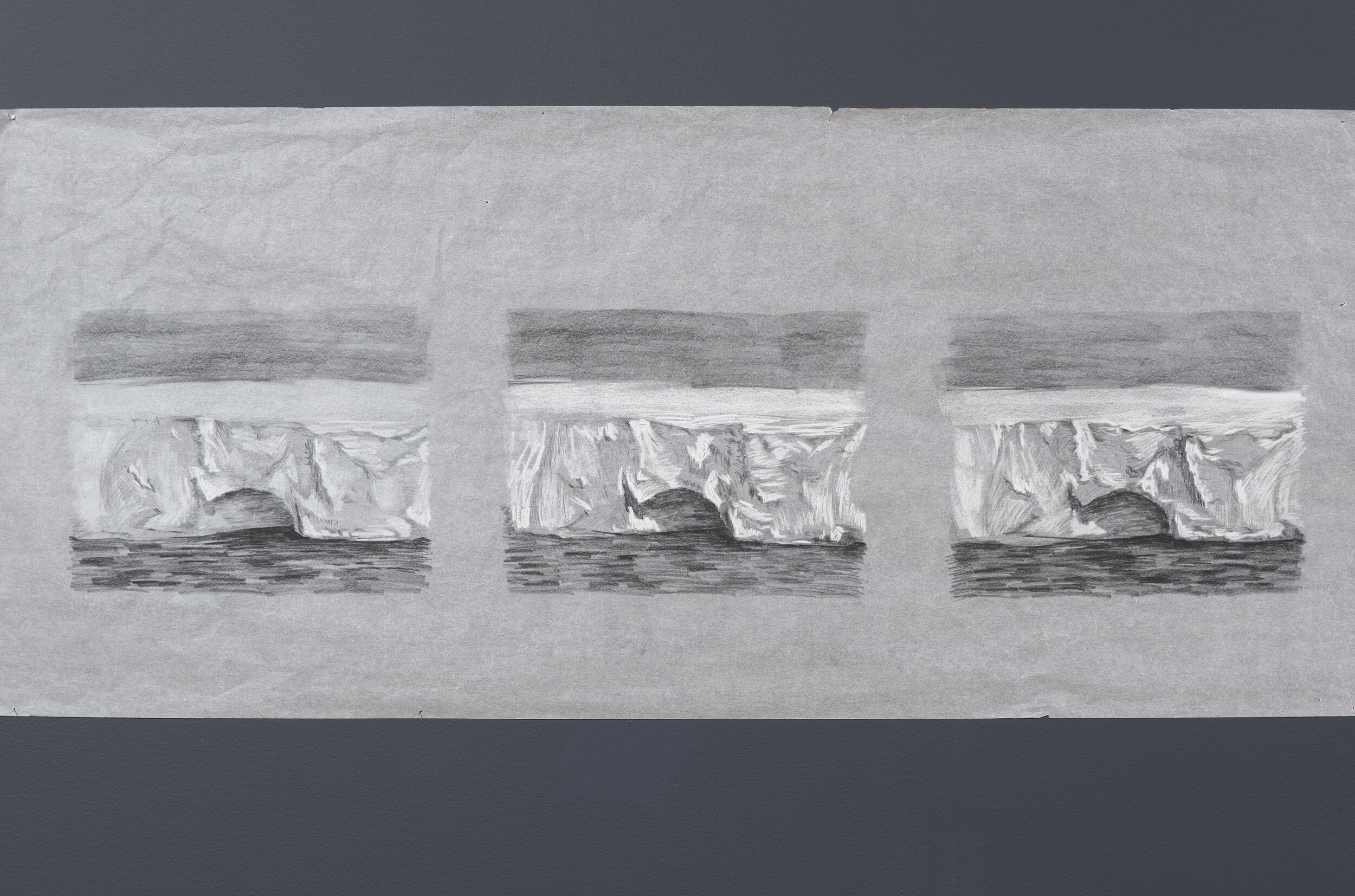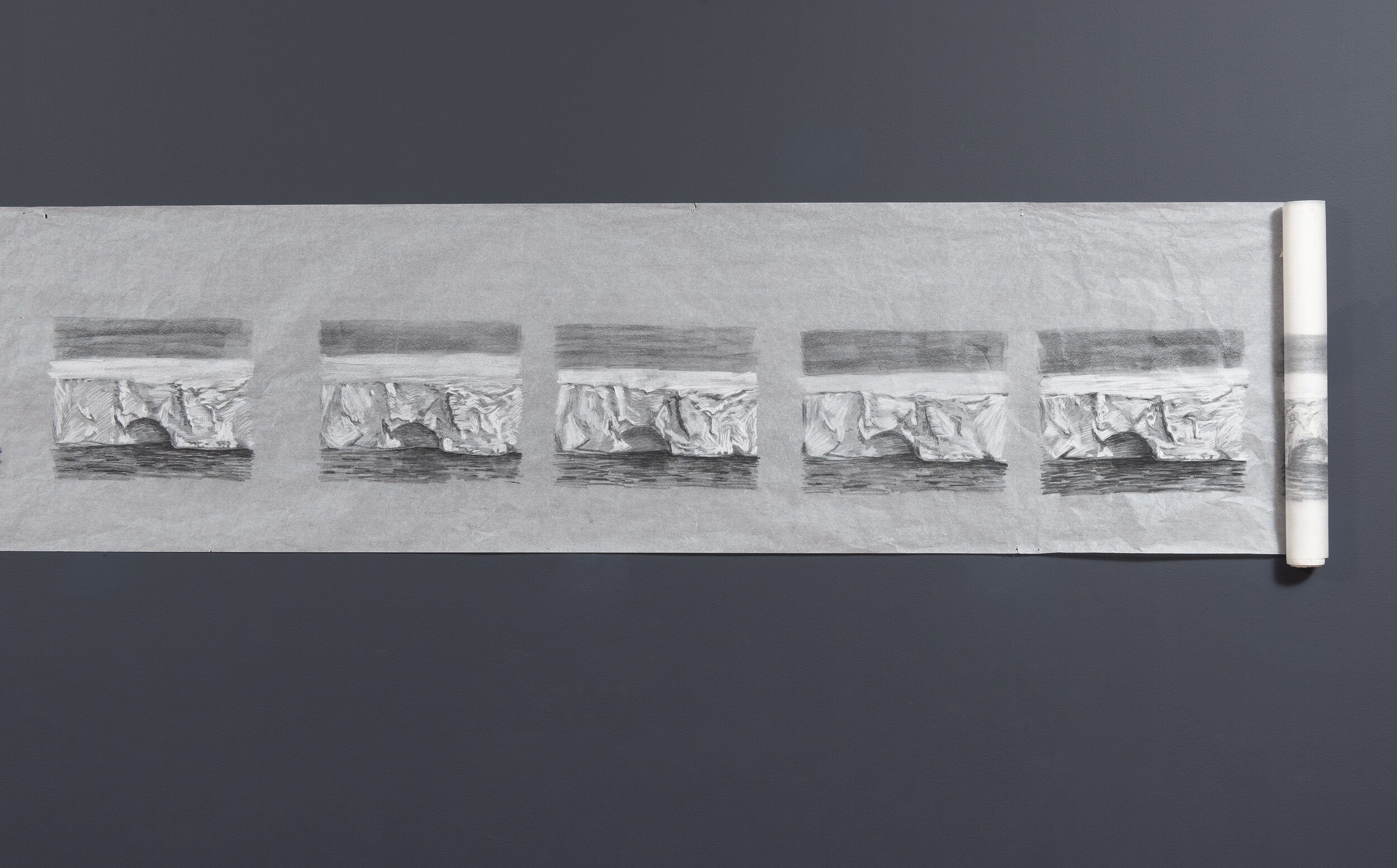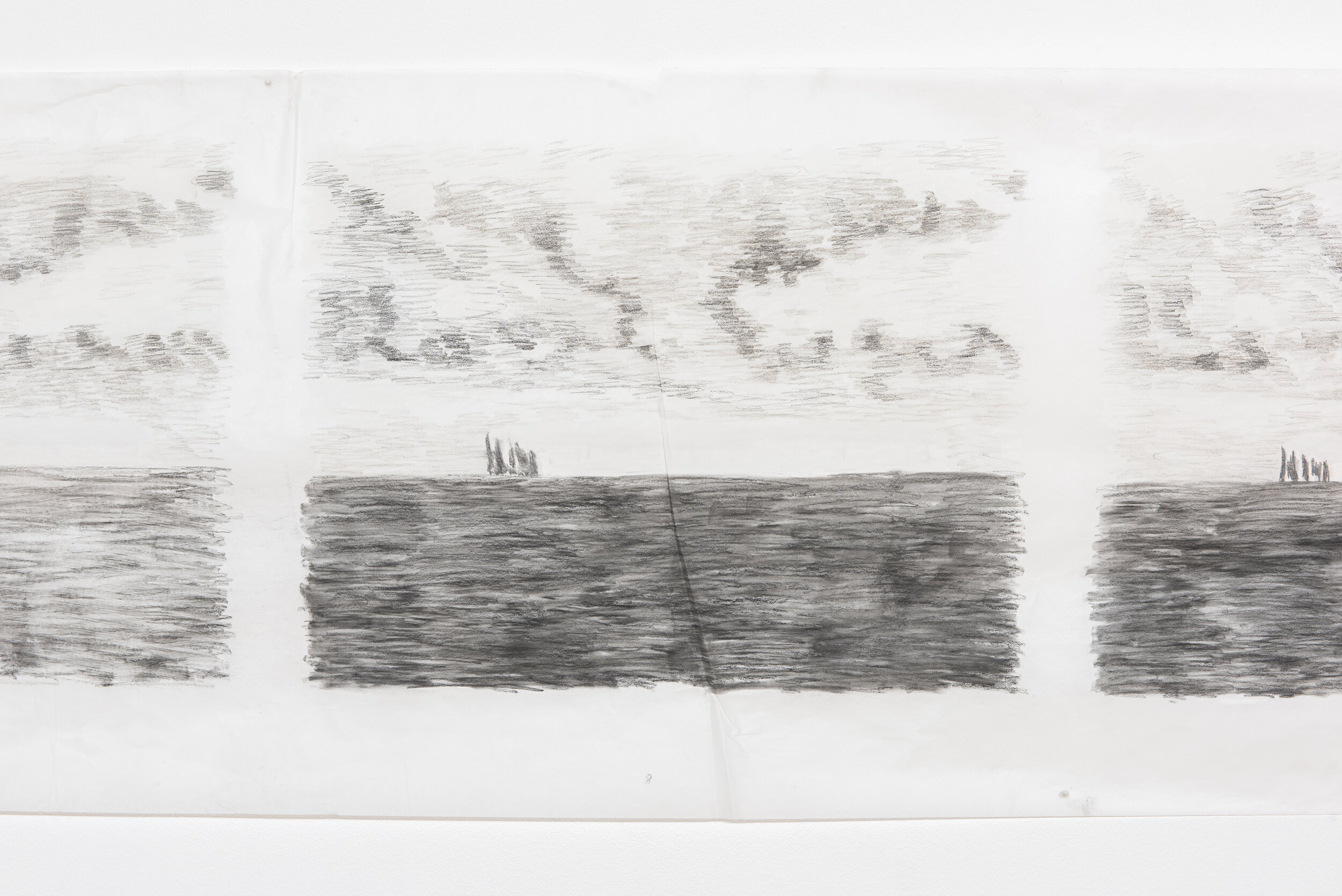Into silence
Into silence
Installation view East Space gallery, Canberra, 2019
Antarctica is never still, consisting as it does of ‘phenomena of relative slowness and viscosity, or, on the contrary, of acceleration and rupture.[1]
One of the most compelling depictions of an animated world is Herbert Ponting’s film Great White Silence (1924)[2] a documentary of the 1910-13 Terra Nova expedition led by Robert Falcon Scott. Ponting’s film is a composite of short sequences stitched together with narrative intertitles presenting a layered story of an expedition to Antarctica.
A single element is present in almost every shot: water, in its liquid, solid and gaseous states; in the form of icebergs, ocean, snow and gathering clouds.
I pulled Great White Silence apart, separating the sequences of footage into individual clips and removing the text intertitles. I found a mesmerising, moving, world-scape interspersed between the action of humans and animals, the heroic tropes and comedic moments. One clip, just a few seconds long, shows the heaving, roiling ocean shot from above with sea birds darting in and out of the frame. There is no heroic vista here; no horizon, icebergs or tiny figures trekking into the white distance. This is the starting point for my work Into silence.
To make the animation I broke the water clip up into individual frames, projected each image onto a roll of tracing paper, and drew over the projection with charcoal and pastel. As I re-drew each frame I removed the birds in order to shift attention to the water, creating an ambiguous space. Subtle traces of the absent birds are evident in the glitches and gaps in the animated surface of the water.
I immersed myself in this small rectangle of light and dark. In my drawing process I entered a kind of spatial reverie, focussed intently, spending months inside this rectangle, becoming intimate with the paper surface; with its texture and the sounds it made. My drawing of Ponting’s footage was a meditation, a way to empathetically connect with this moment by staying with the sequence over time.
The translation of each frame into the animation was a means of paying homage to Ponting and his work, as well as deconstructing it. In drawing I move through Ponting’s gaze into a new space. When I recently returned to look at that snippet of the film in its original context after making Into silence, I was surprised at its brevity, really just a few moments between two other scenes. I realised I’d been so deeply immersed in those few seconds that they became a whole world for me.
While making the water animation I made two other series of drawings of drifting icebergs. These drawings are included here as part of the larger series that contributed to Into silence.
[1] Wylie, J., ‘The Ends of the Earth: Narrating Scott, Amundsen and Antarctica’, in Cosgrove, D. and della Dora, V. eds. High Places: Cultural Geographies of Mountains, Ice and Science, I.B.Tauris & Co, London, New York, 2009, 35.
[2] Herbert Ponting, The Great White Silence 1924, restored and republished by the British Film Institute Archive 2011.BFI restored and reconstructed the footage to replicate the film that Ponting distributed in 1924 – including his tinting which adds colour to sequences giving them various a blue, yellow or purple cast)
